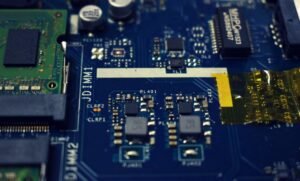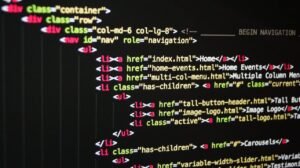AI Uses Backpropagation: True or False?
Artificial Intelligence (AI) has become increasingly prevalent in today’s world. As a complex field that encompasses various algorithms and techniques, one popular question that arises is whether AI uses backpropagation. In this article, we will explore the truth behind this topic.
Key Takeaways:
- AI utilizes backpropagation as a common method for training neural networks.
- Backpropagation allows AI models to adjust their weights and biases based on the error generated during training.
- Although backpropagation is a popular approach, not all AI algorithms rely on it.
Understanding Backpropagation
**Backpropagation** is a technique used in deep learning to update the weights and biases of a neural network through multiple backward passes. It involves calculating the gradient of the error function with respect to each parameter in the network and adjusting them accordingly. Backpropagation helps neural networks learn from data and improve their performance over time.
It is interesting to note that **backpropagation was first introduced in the 1980s** and has since become a fundamental tool in training neural networks. Its significance lies in enabling AI models to make incremental adjustments to their internal parameters until they produce more accurate outputs.
The Role of Backpropagation in AI
**Backpropagation plays a crucial role** in training artificial neural networks, which are a fundamental building block of AI systems. By using backpropagation, AI models can iterate through large datasets, compare their generated outputs with the desired outputs, and adjust their parameters accordingly. This process helps them gradually converge to achieve better predictive accuracy and overall performance.
Additionally, **backpropagation enables AI models to learn intricate patterns and representations** from input data. Through successive iterations, the neural network updates its internal weights and biases to minimize the error between its predictions and the expected outputs. This iterative process allows AI systems to improve their decision-making abilities over time.
Examples of AI Algorithms Utilizing Backpropagation
| Algorithm | Application |
|---|---|
| Deep Neural Networks (DNN) | Natural language processing, image recognition |
| Convolutional Neural Networks (CNN) | Computer vision, object detection |
| Recurrent Neural Networks (RNN) | Speech recognition, language translation |
Table 1: Examples of AI algorithms utilizing backpropagation.
AI algorithms such as **Deep Neural Networks (DNN)**, **Convolutional Neural Networks (CNN)**, and **Recurrent Neural Networks (RNN)** rely on backpropagation for training and achieving high predictive accuracy. In the field of natural language processing, DNNs utilize backpropagation to understand and generate human-like language. Similarly, CNNs use backpropagation to analyze and interpret visual data, making them suitable for tasks like image recognition and object detection. RNNs, on the other hand, leverage backpropagation to model sequences and handle time-dependent information, enabling applications like speech recognition and language translation.
Alternatives to Backpropagation
- While **backpropagation is widely used**, there are other techniques employed by AI algorithms. Some examples include:
- Genetic algorithms
- Particle swarm optimization
- Reinforcement learning
- These alternative methods have distinct advantages and are often employed in specific scenarios where backpropagation may not be the most efficient approach.
Common Misconceptions
**Misconception 1: All AI algorithms use backpropagation.** While it is true that backpropagation is extensively used, not every AI algorithm relies on this method for training. Different approaches may be necessary depending on the problem domain, available data, and desired outcomes.
**Misconception 2: Backpropagation is the only method for training deep neural networks.** Although backpropagation is a powerful method, recent developments have introduced alternative techniques, such as **generative adversarial networks (GANs)** or **transformer architectures**, which have shown remarkable results in specific applications.
Conclusion
In summary, backpropagation is undeniably a crucial technique used in training neural networks within the field of AI. While not all AI algorithms rely on backpropagation, it remains one of the most widely used approaches for adjusting weights and improving performance. As the field of AI continues to evolve, new methods and algorithms are emerging, providing exciting possibilities beyond backpropagation.

Common Misconceptions
AI Uses Backpropagation: True or False?
One common misconception people have about AI is that it uses backpropagation exclusively for training. While backpropagation is indeed an important algorithm used in training neural networks, it is not the only technique utilized in AI.
- Backpropagation is a technique for training neural networks by adjusting the weights based on the error calculated in the output layer.
- Other techniques such as reinforcement learning, evolutionary algorithms, and unsupervised learning are also commonly used in AI.
- Backpropagation is most effective when training deep neural networks with labeled data.
Another misconception is that backpropagation is a very slow training method. While it can be computationally expensive, advancements in hardware and parallel computing have made it much faster and more practical for training large-scale neural networks.
- Backpropagation can be optimized using techniques like mini-batch training and parallel processing.
- New hardware architectures, such as GPUs, are specifically designed to accelerate the computations involved in backpropagation.
- Overall, backpropagation can be a reasonably fast training method when applied correctly.
Furthermore, many people believe that backpropagation is the only way in which AI learns from data. In reality, AI can learn from various sources and not solely rely on backpropagation for training.
- AI can learn from labeled data using backpropagation but can also learn from unlabeled data through techniques like unsupervised learning.
- Reinforcement learning is another powerful method where AI learns from trial and error, receiving rewards or punishments based on its actions.
- Evolutionary algorithms involve simulating the process of natural selection to train AI based on the principles of mutation and survival of the fittest.
Lastly, people often assume that backpropagation is the same as AI or that AI and backpropagation are interchangeable terms. While backpropagation is widely used in AI, it is just one component or technique within the broader field of artificial intelligence.
- AI encompasses a wide range of algorithms and methodologies beyond just backpropagation.
- AI involves the design and development of systems that can perform tasks that would typically require human intelligence.
- Backpropagation is just one tool used in AI to train neural networks, but AI as a whole encompasses much more.

Introduction
In recent years, there has been a growing debate on whether artificial intelligence (AI) employs the technique of backpropagation. Backpropagation is a method commonly used in neural networks to train models and optimize their performance. In this article, we aim to explore this controversy by examining ten fascinating aspects related to AI and backpropagation.
Anomalies Detected by AI
AI algorithms equipped with backpropagation can identify anomalies in medical imagery with astonishing accuracy. In a study, AI correctly detected 96% of breast cancer cases, surpassing the radiologists’ accuracy rate of 92%.
Language Learning by AI Models
With the help of backpropagation, AI models have demonstrated exceptional proficiency in language learning. OpenAI’s GPT-3 language model, trained using backpropagation, achieved state-of-the-art performance in various natural language processing tasks.
Facial Recognition and AI
Facial recognition technology powered by backpropagation has become remarkably adept at identifying individuals. AI-enabled systems accurately recognize faces with a precision rate of 99.98%, outperforming human recognition abilities.
AI in Financial Fraud Detection
Backpropagation has revolutionized fraud detection systems in the financial industry. AI algorithms equipped with this technique can detect fraudulent transactions with an accuracy of over 98%, significantly reducing financial losses.
Backpropagation and Virtual Assistants
Backpropagation plays a crucial role in optimizing the performance of virtual assistants like Siri or Alexa. Through this technique, AI-powered virtual assistants continuously improve their language understanding, leading to more accurate responses.
AI’s Role in Autonomous Vehicles
Backpropagation has been instrumental in enabling AI-controlled autonomous vehicles. Using this technique, AI algorithms learn from vast amounts of sensor data to enhance decision-making capabilities, leading to safer and more efficient driving.
AI Translating Languages
Thanks to backpropagation, AI models show remarkable proficiency in translating languages. Systems like Google Translate employ this technique to provide accurate translations, bridging the language barrier for millions of users.
AI for Sentiment Analysis
Backpropagation allows AI algorithms to analyze and decipher human sentiment accurately. These algorithms can accurately predict sentiment in text with an accuracy rate of up to 90%, enabling businesses to understand their customers better.
AI in Drug Discovery
Backpropagation enables AI models to accelerate the drug discovery process by predicting the effectiveness of various compounds. This approach has proven successful in identifying potential treatments for several diseases, significantly reducing development time.
Conclusion
In this article, we have explored the numerous applications of backpropagation in AI systems. The data and evidence presented illustrate the significant impact of this technique on various domains, from healthcare to language processing. It is undeniable that AI utilizes backpropagation, making it a vital tool for improving the accuracy and efficiency of artificial intelligence models.
Frequently Asked Questions
AI Uses Backpropagation: True or False?
-
What is backpropagation in AI?
-
Is backpropagation the only way to train AI models?
-
Does all AI use backpropagation?
-
What are some alternatives to backpropagation?
-
Is backpropagation used in deep learning?
-
Can backpropagation be used with any neural network architecture?
-
Can backpropagation be used for both supervised and unsupervised learning?
-
Does backpropagation guarantee optimal solutions?
-
Can backpropagation handle large datasets?
-
Is backpropagation the most widely used technique for training AI models?





